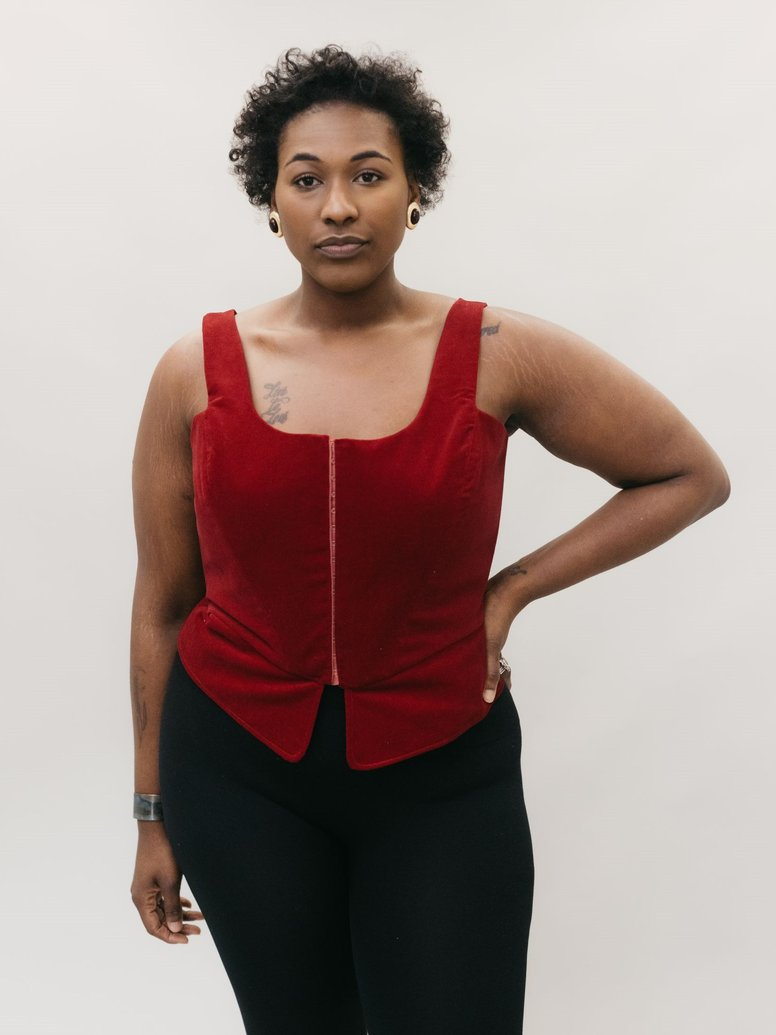From Folkwear:
The idealized figure silhouette of the Elizabethan era (1558-1603) required stiffened supporting undergarments to maintain a slender and visually elongated upper body. Both men and women wore such undergarments, so the early corset-makers were also men's tailors and armor-makers. M' Lady's Corset is representative of the late 16th and early 17th- century garments worn by upper-class women in the royal courts (square-neck version) and working class women in their daily lives (scoop-neck version).
Both versions feature dropped waistline at center front to the V-neck that was characteristic of the Elizabethan era, and wide-set shoulder straps to further emphasize the small-waisted impression. Princess-style seams, while characteristic of later years, facilitate personalized fit for the contemporary wearer. Square-neck corset laces in back with purchased eyelets or handmade eyelets (instructions inside pattern), and adjustable straps that lace through eyelets in the front. Scoop-neck corset fastens in front with purchased hook-and-eye tape, and featured peplum that reflects the waistline tabs of 16th-century doublets and corsets. Placement of boning pieces can be altered for desired stiffness ( see Important Notes about Corset Construction inside pattern).
Recommended Fabrics: For outer layer, medium to heavy-weight stable fabrics that do not drape, such as silk satin, brocade, damask, shantung, dupioni; cotton damask, brocade; linens and blends. For lining, same as outer layer or slightly lighter-weight equivalent. For supporting inner layers, see Important Notes about Corset Construction inside pattern.
Sizes: XS - 3XL



















